We’d like to remind Forumites to please avoid political debate on the Forum.
This is to keep it a safe and useful space for MoneySaving discussions. Threads that are – or become – political in nature may be removed in line with the Forum’s rules. Thank you for your understanding.
📨 Have you signed up to the Forum's new Email Digest yet? Get a selection of trending threads sent straight to your inbox daily, weekly or monthly!
Rising Damp Solutions
Comments
-
I thought it would have some sort of existing DPC. I tried to look for it but it's hard with the paint over the top. That is pretty much what he did! I guess it's whether it's worth removing whatever chemical DPC has been injected before. I worry that's making it worse. Good to know re paints. Unfortunately I think we'd have to get a quote for removing existing paint first then as I doubt it was done properly.stuart45 said:I wouldn't go for a chemical DPC myself. A house of 1900 circa will probably have a slate one anyway. A lot of these damp salesmen stick a damp meter in the walls and say it's rising damp, without really doing a proper investigation.
It depends on what type of paint is used. Lime based paints are OK for a shelter coat, but masonry paints don't really allow the brickwork to breathe.0 -
When you take the pictures, try and get one at DPC level, one of the guttering and roof as well as the whole flank. If there is any cracks in the pebbledash, a close up of them.1
-
JenniferM91 said:(possible evidence of previous chemical insulated having been injected from outside) ripping it all out, new insulation and damp membrane, re bricking and plastering up to 1 metre in height. He thinks any previous DPC has been compromisedWell, if the property has had chemicals injected in to the walls, a layer of "waterproof" plaster my well have been slapped on the walls internally. Drill a small hole in to an external wall just above the skirting board. If the dust is pinky brown followed by grey, then brick red, you know damp treatments have been applied in the past. You also have the evidence to hand showing that the treatments have failed to cure the problem and possibly made things worse.Check around the outside - Is there paving right up to the walls ?Is there at least one, preferably two courses of brick between any paving and the damp proof course ?Is the pointing in reasonable condition ?Any language construct that forces such insanity in this case should be abandoned without regrets. –
Erik Aronesty, 2014
Treasure the moments that you have. Savour them for as long as you can for they will never come back again.0 -
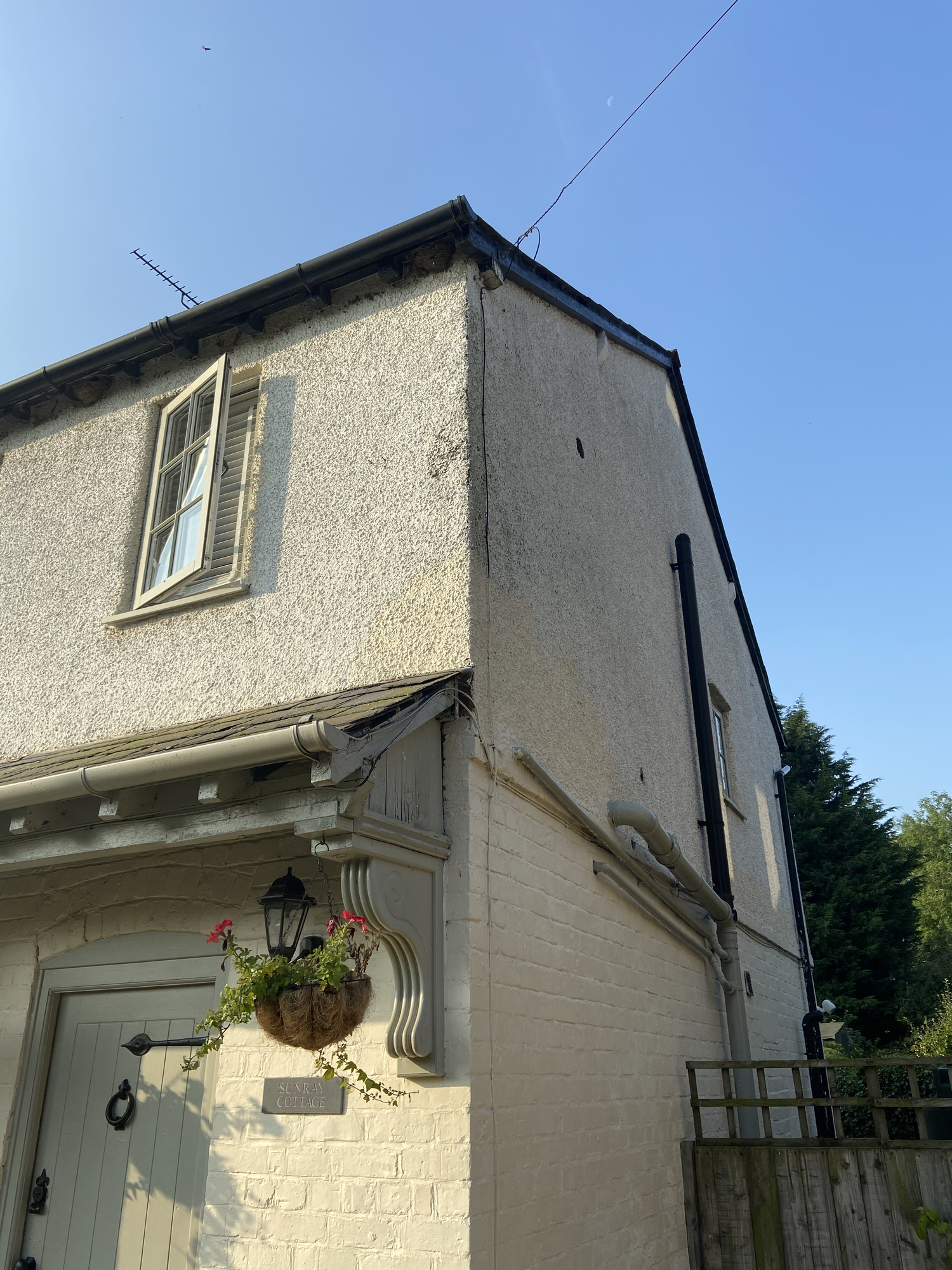
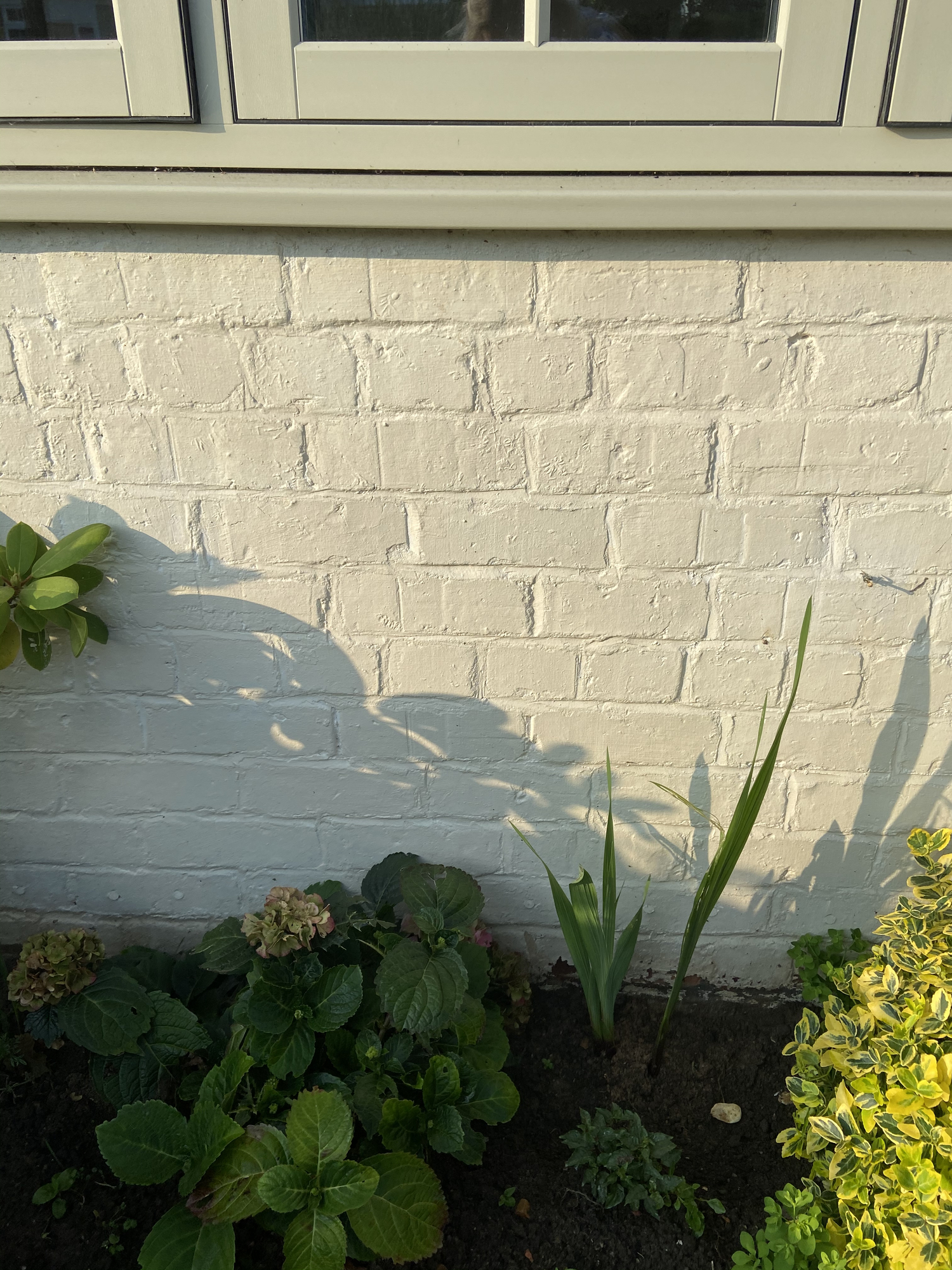
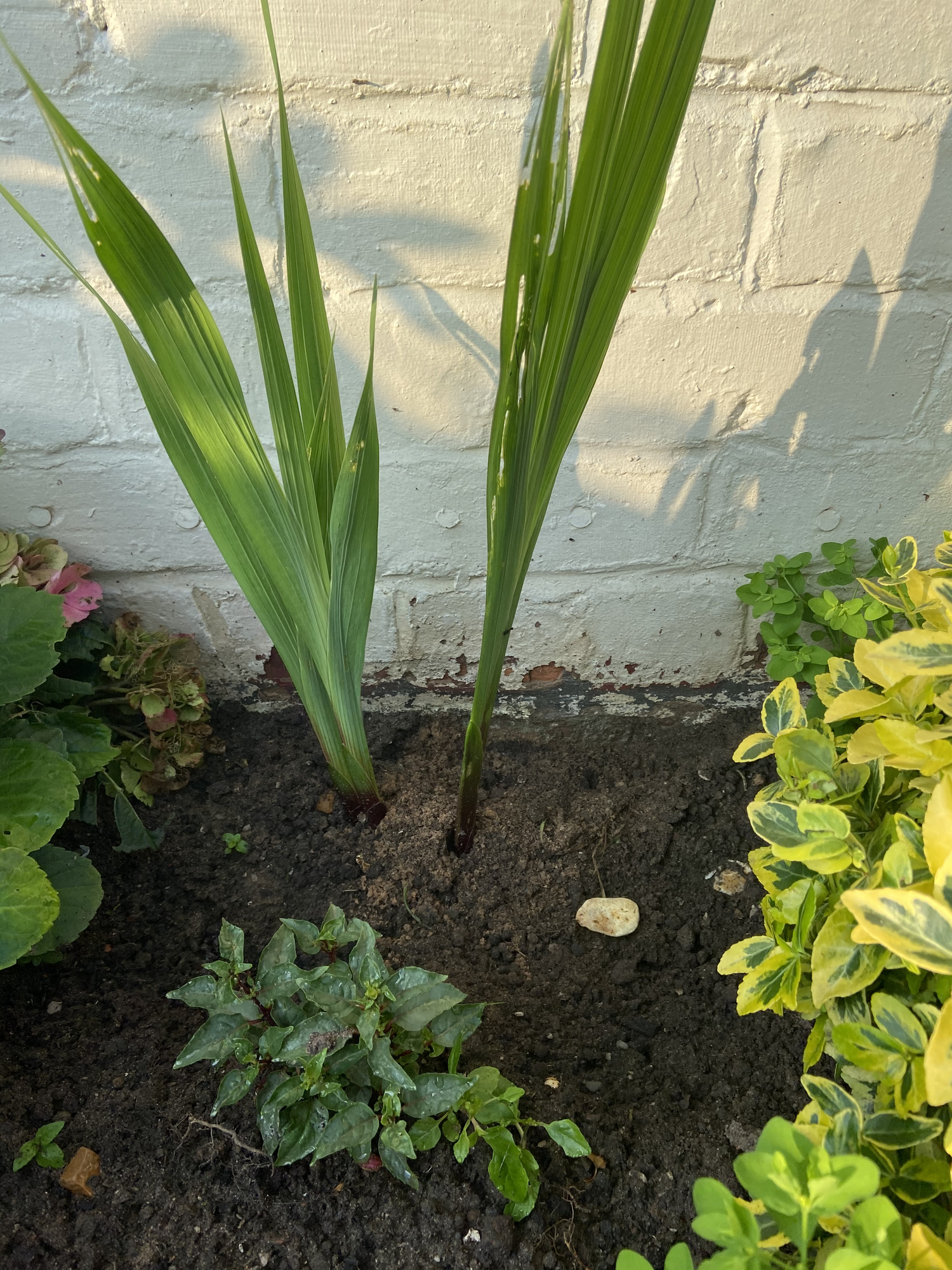
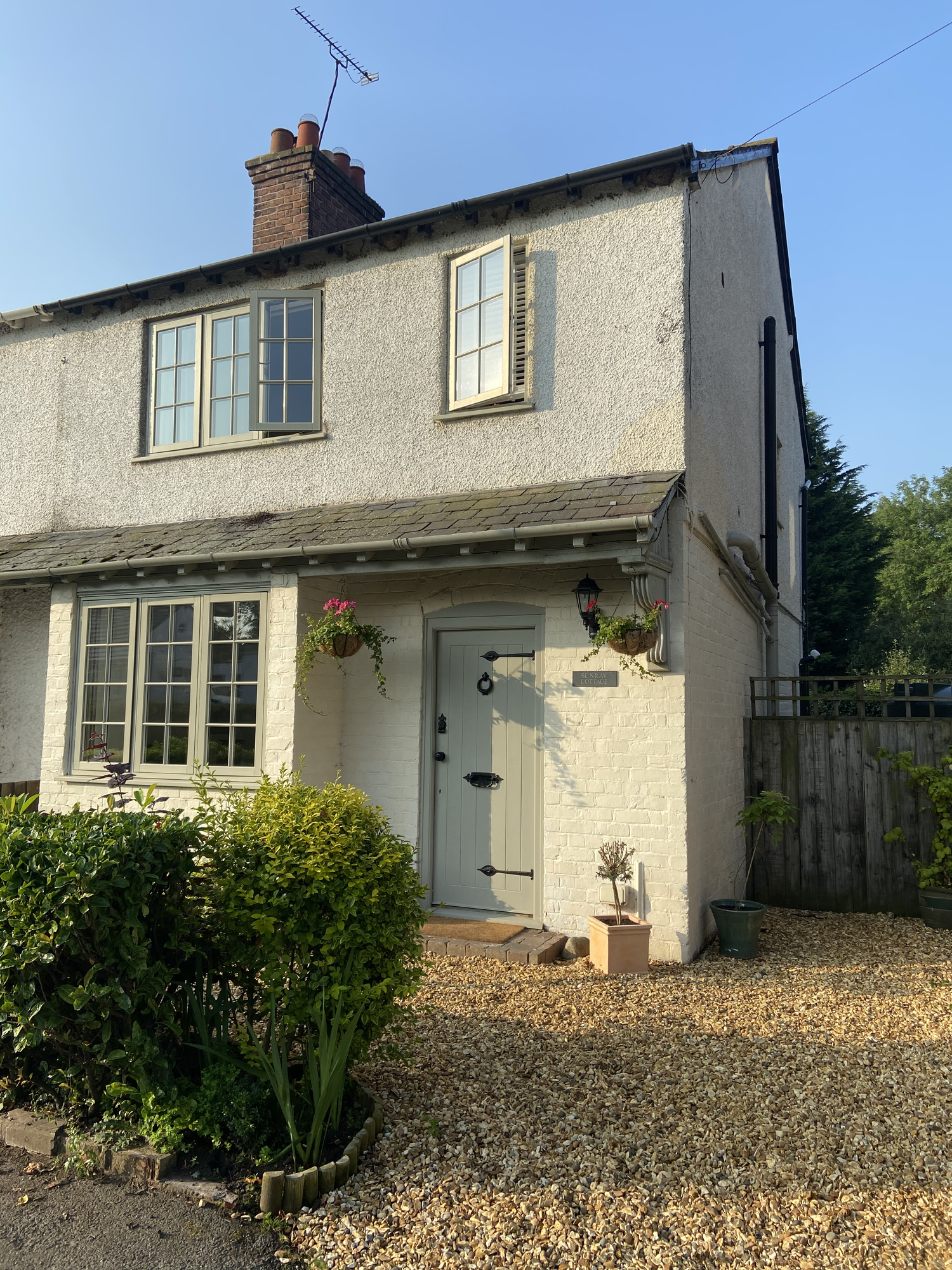
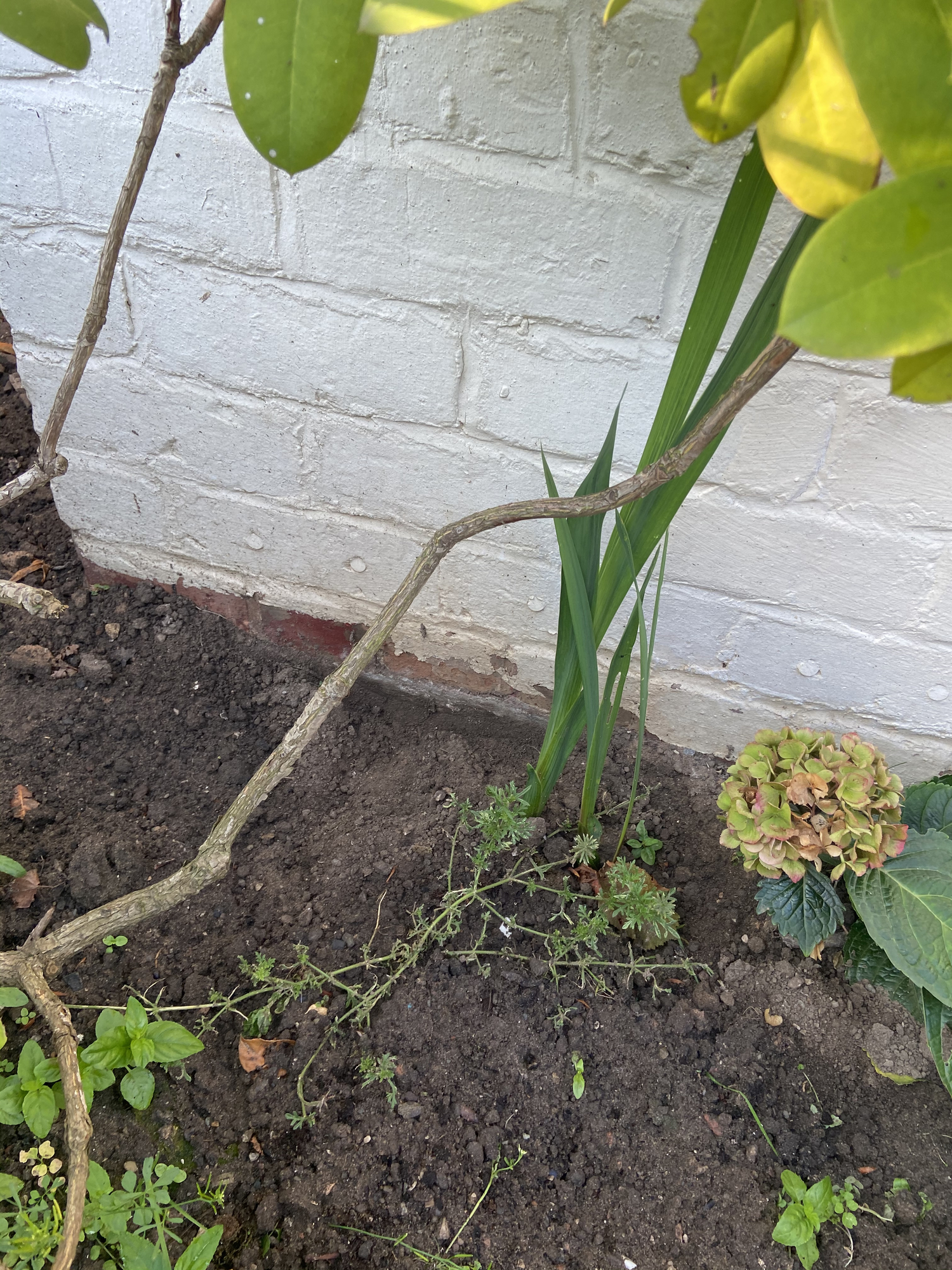
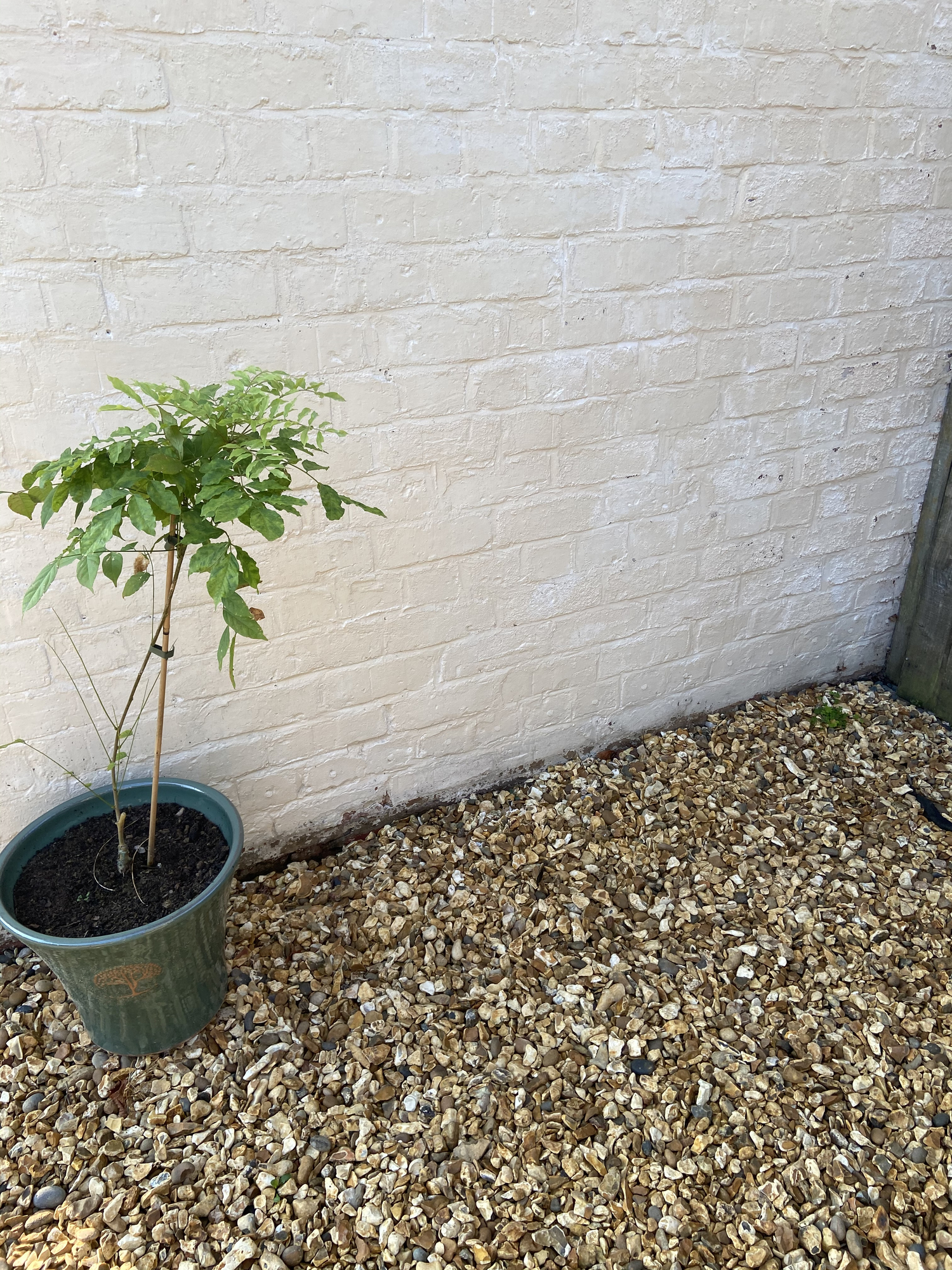
0 -
So above our ugly cottage that needs a paint! I’ve tried to get a shot of the brick unpainted but I can’t tell if that’s where the original damp course is. You can see the injection marks from previous chemical damp course. The property had a paved drive that does go up to the edge of the house which we have gravelled over. I do worry the driveway underneath may be an issue as it doesn’t allow for proper drainage. The pebble dashing is dirty (partly due to nesting house martins) but largely okay. We did try and clean the outside when we first moved in but dislodged some so have left it.Any thoughts welcome and thank you so much for advice!0
-
As a rough guide, the DPC will be at the base of the front door or one (maybe two) bricks down. Some of the time, the joint where the DPC is, is a little wider than the others. By the looks of it, yours is about the same height as the soil level in the flower border.Solution - Dig a trench 200-300mm wide and about 200mm deep. Fill this with coarse gravel so that it finishes 100-150mm below the DPC. Do this all the way round the building. If you can get rid of the paint on the brickwork, that will allow the walls to dry out.Want to repaint - Consider using lime wash or a silicate paint once the old stuff has been removed.Any language construct that forces such insanity in this case should be abandoned without regrets. –
Erik Aronesty, 2014
Treasure the moments that you have. Savour them for as long as you can for they will never come back again.0 -
Recommended or not, he's just trying to up sell you into getting something that's completely useless. Two things, rising damp is largely a myth and a chemical DPC only adds to the amount of moisture in a brick wall.JenniferM91 said:Oh dear. Is there anything we can do about the paint? Or is it best to get it repainted and hope the moisture leaves from the inside once it's no longer drawing in from the outside? Yes, the surveyor would carry out the work. Although he comes recommended and his theory seemed to make sense. I had thought that re travelling to upper floors.
What's the base of the property constructed from, concrete or is it just plain earth? By the dates of the build I'd suggest the latter. This time of the year onwards you can start to get fungi growing in the soil and this sometimes lead to a bit of a musty smell coming up from the ground, not a great deal you can do about it with houses of a certain age. Also if the walls are holding onto moisture then it's probably worth getting rid of the paint and let the brick breath.0 -
The walls look to me like they have been repointed at some point, so it may be a hard sand/cement mortar rather than lime which could add to the problem. As neilmcl stated the walls would benefit from being able to breathe and dry out.0
-
Solid brick outside, but what's on the inside of the external walls? OP mentioned in the 1st post that the house seems well insulated, have these been insulated internally? If so, and non-breathable insulation etc have been used (like Celotex etc), then there will also be moisture trapped there.0
-
Damp/Moisture meters measure conductivity, it isn't as straight forward popping it at the wall and it letting you know its wet. From the pictures of the painted brick on the outside, if it's not shadowing from light, it looks like there's efflorescence building up which would suggest the wall is holding in extra moisture, which as others have suggested probably due to the paint or potential cement pointing. Taking the paint off giving it a brush down and a more suitable covering would sort that out. You say you stripped the place back but what did you do with the walls on the level you are still experiencing the foosty smell? I'd bet if the smell is worse on wet days that you definitely have a water ingress problem.
Beautiful house btw
I bought a small early 1900s house last year and it stank of damp in the bathroom the day I got the keys. Thought it was the questionable carpet tiles in there but once I lifted them and could still smell it, I followed my nose and I knew it was in the walls. The previous owner's shower had leaked behind tiles for years and the bath was literally keeping the walls up right. New joists, battons and plaster later, the smell has gone! Also had a wet patch in an internal wall at the bottom which google would have you believe was a textbook case of "rising damp", just a blocked downpipe on the other side not letting the wall dry out. Definitely follow your nose and ask what's on the other side of any wall!
0
Confirm your email address to Create Threads and Reply

Categories
- All Categories
- 352.9K Banking & Borrowing
- 253.9K Reduce Debt & Boost Income
- 454.7K Spending & Discounts
- 246K Work, Benefits & Business
- 602K Mortgages, Homes & Bills
- 177.8K Life & Family
- 259.9K Travel & Transport
- 1.5M Hobbies & Leisure
- 16K Discuss & Feedback
- 37.7K Read-Only Boards





